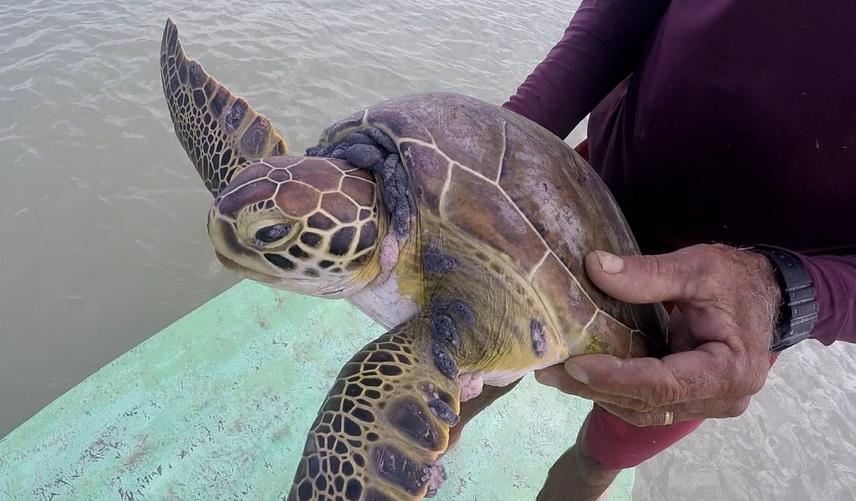Yedda Christina Bezerra Barbosa de Oliveira
Other projects
4 Sep 2019
Reducing Impacts of Incidental Capture and Promoting Sea Turtles Conservation through Community-Based Monitoring
The coastal waters of Paraíba host important sea turtle foraging habitats, which are fundamental for juveniles to recruit into adult populations and for adults to build sufficient reserves to breed and produce offspring. The main goal of this project is set up a pilot study to map and assess the main foraging grounds along three communities of Paraíba by engaging fishermen on data collection regarding sea turtle occurrence and distribution.

Release of juvenile green turtle trapped in a fishing net at Cabedelo.
Studies on sea turtle biology have typically focused on the reproduction and post- nesting movements of females, and not until more recently have multi-disciplinary approaches been conducted to investigate the distribution and use of foraging habitats. However, there are still significant knowledge gaps related to the structure of the sea turtle populations using the Brazilian cost, especially due to its great extension.
Although Paraíba coast has been recognised as an important feeding and nesting area of at least four sea turtle species, our understanding of sea turtle foraging ecology on this area is limited to anecdotal information provided by local fishermen. Also, human pressure has increased in the last decades due to overfishing, commercial activities and few studies on how these activities may impact this region. We believe this pilot study will generate recommendations to ensure new legal restrictions on coastal spatial planning and to create a sea turtle in-water monitoring community-based program associated with a sea turtle watching community-based ecotourism program.
This project’s overall aim is to identify high use areas for sea turtles and the main artisanal fishing grounds in the reef of Paraíba, Brazil. To ensure the long-term impact of this pilot study, it is crucial to engaged fishing communities on data collection by creating a sea turtle in-water monitoring community-based program. This will allows to identify critical sea turtle conservation sites, gain a better understanding of the foraging ecology of sea turtles in the study area and to contribute to a better legislation regarding the coastal spatial planning. This bottom-up approach, strongly based on stakeholder involvement, will ensure that the new legal restrictions on coastal spatial planning and establishment of marine protected areas can be enforced.